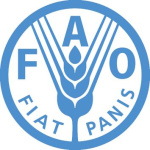- Industrie: Agriculture
- Number of terms: 87409
- Number of blossaries: 0
- Company Profile:
Established in October 1945 with the objective of eliminating hunger and improving nutrition and standards of living by increasing agricultural productivity, FAO coordinates the efforts of governments and technical agencies in programs for developing agriculture, forestry, fisheries, and land and ...
A compound or substance that contains a colour-forming group.
Industry:Biotechnology
A compound that elicits an immune response by stimulating the production of antibodies. The antigen, usually a protein, when introduced into a vertebrate organism is bound by the antibody or a T cell receptor.
Industry:Biotechnology
A compound that elicits an immune response by stimulating the production of antibodies. The antigen, usually a protein, when introduced into a vertebrate organism is bound by the antibody or a T cell receptor.
Industry:Biotechnology
A compound that inhibits the effect of an agonist in such a way that the combined biological effect of the two becomes smaller than the sum of their individual effects.
Industry:Biotechnology
A compound that is not necessary for growth or maintenance of cellular functions but is synthesized, generally, for the protection of a cell or micro-organism, during the stationary phase of the growth cycle.
Industry:Biotechnology
A compound that is used for the treatment of a disease or for improving the well-being of an organism. a.k.a. pharmaceutical agent; drug; protein drug.
Industry:Biotechnology
A compound that kills organisms by virtue of specific biological effects rather than as a broader chemical poison. Specific types include bio-insecticides and bio-fungicides. Bio-pesticides differ from biocontrol agents in that bio-pesticides are passive agents, whereas biocontrol agents are active, seeking out the pest to be destroyed. There are some extremely attractive anti-pest materials, such as <i>Bacillus thuringiensis</i> (Bt) toxin, which specifically interferes with the absorption of food from the guts of some insects but is harmless to mammals. The rationale behind developing bio-pesticides is that they are more likely to be biodegradable and are targeted at specific elements of the pest's metabolism.
Industry:Biotechnology
A compound used to dissolve some neutral organic substances, such as in media preparation. Organic co-solvents include alcohols (usually ethanol), acetone and dimethylsulphoxide (DMSO).
Industry:Biotechnology
A condensed mass of chromatin found in the nuclei of female mammals. It is a late-replicating, inactive X-chromosome. Named after its discoverer, Murray Barr (1908-).
Industry:Biotechnology
A condition in which a bacteriophage genome (pro-phage) survives within a host bacterium, either as part of the host chromosome or as part of an extrachromosomal element, and does not initiate lytic functions.
Industry:Biotechnology
